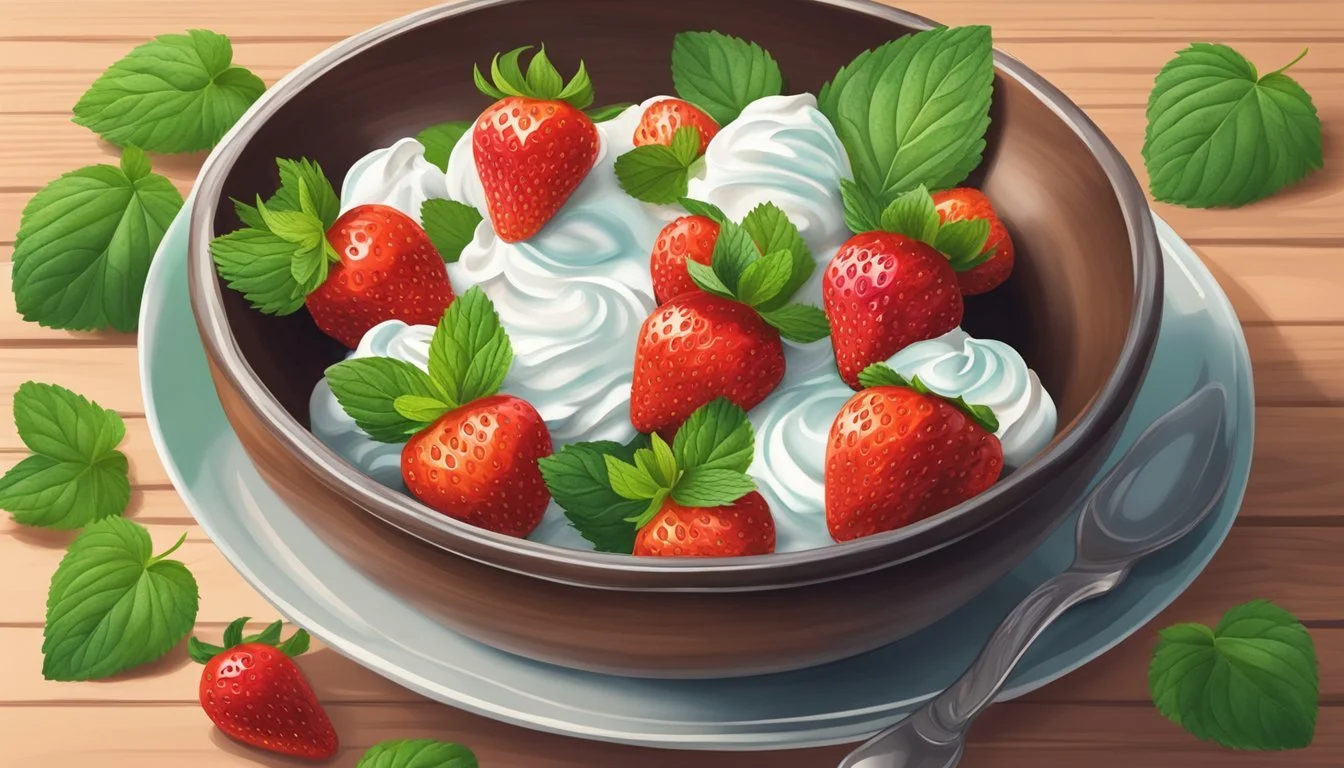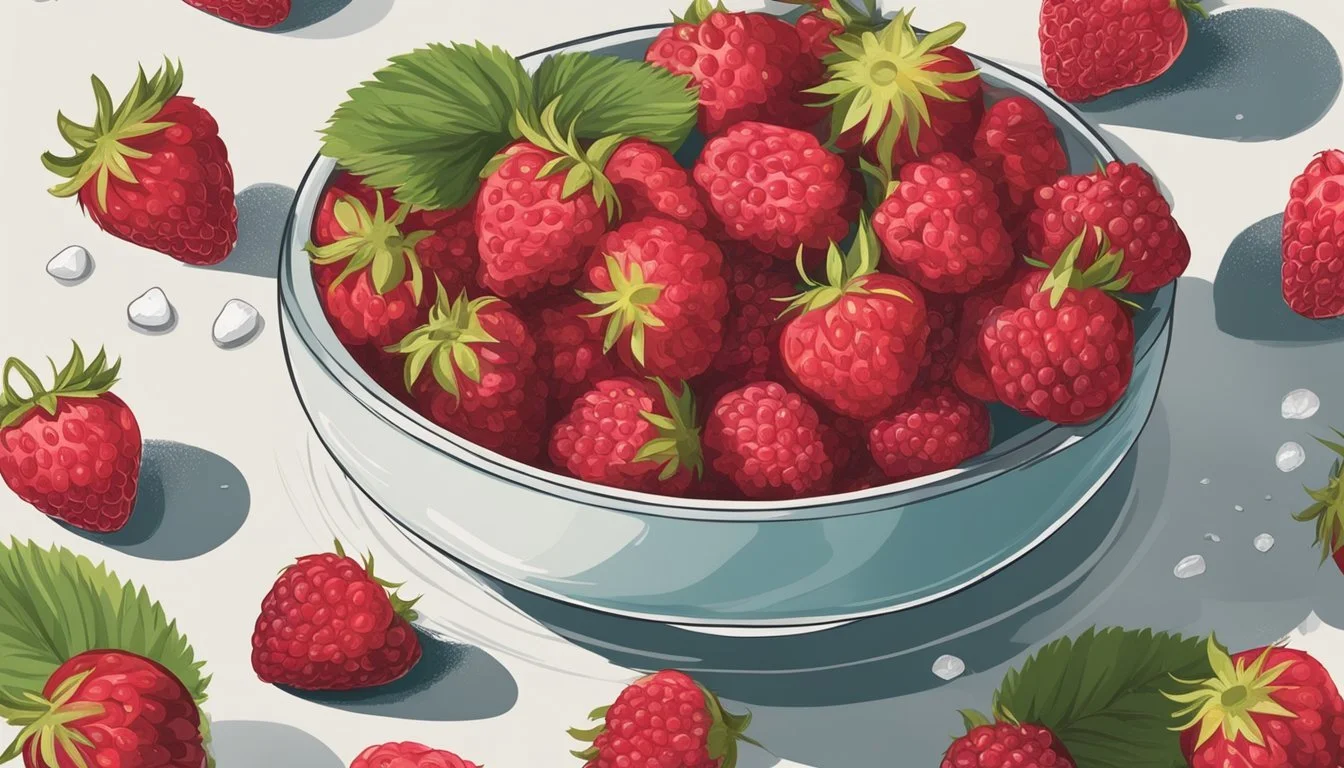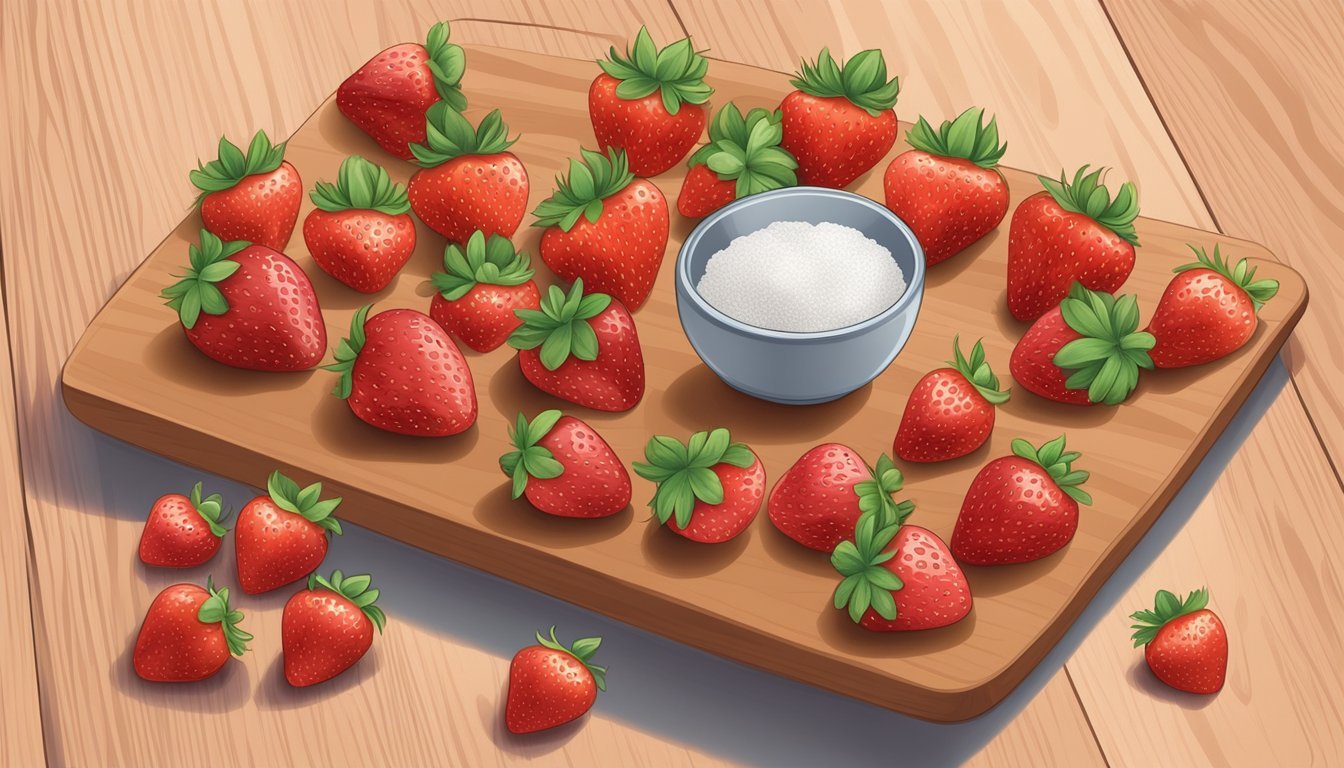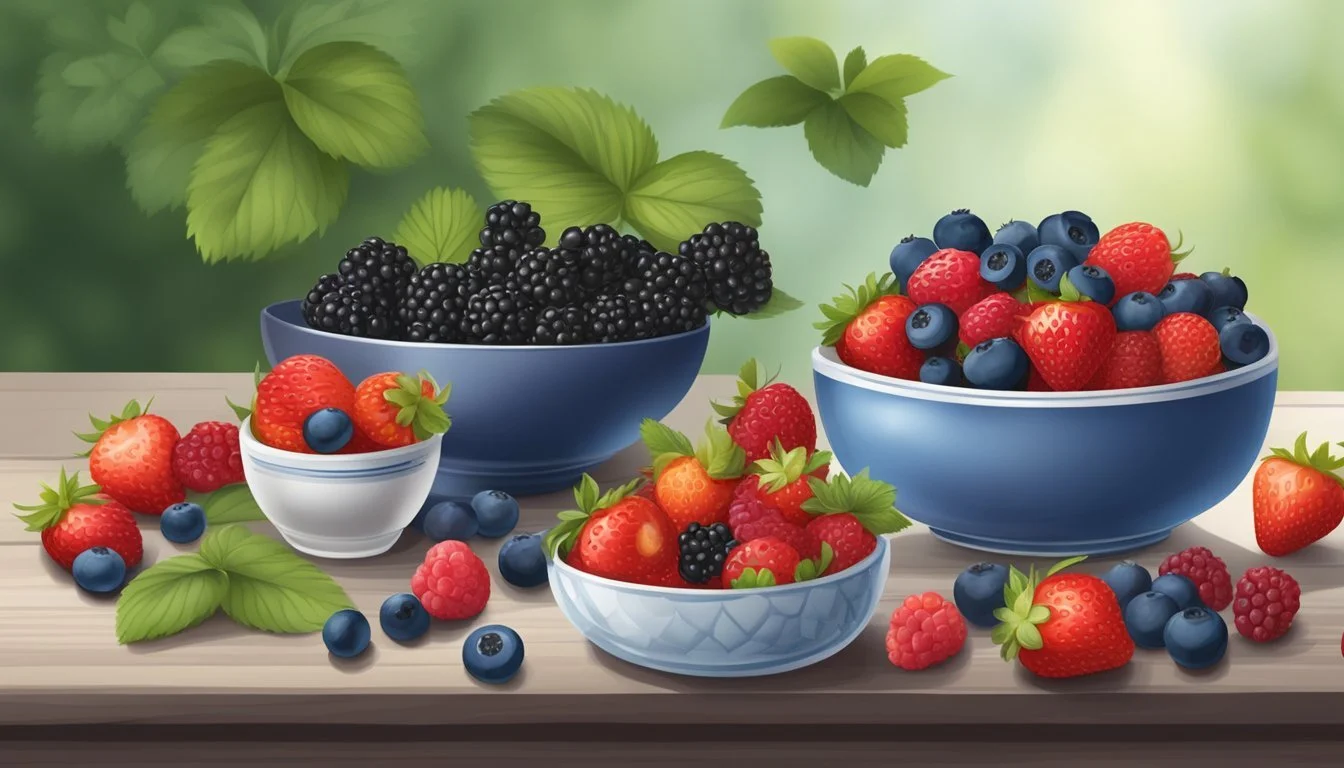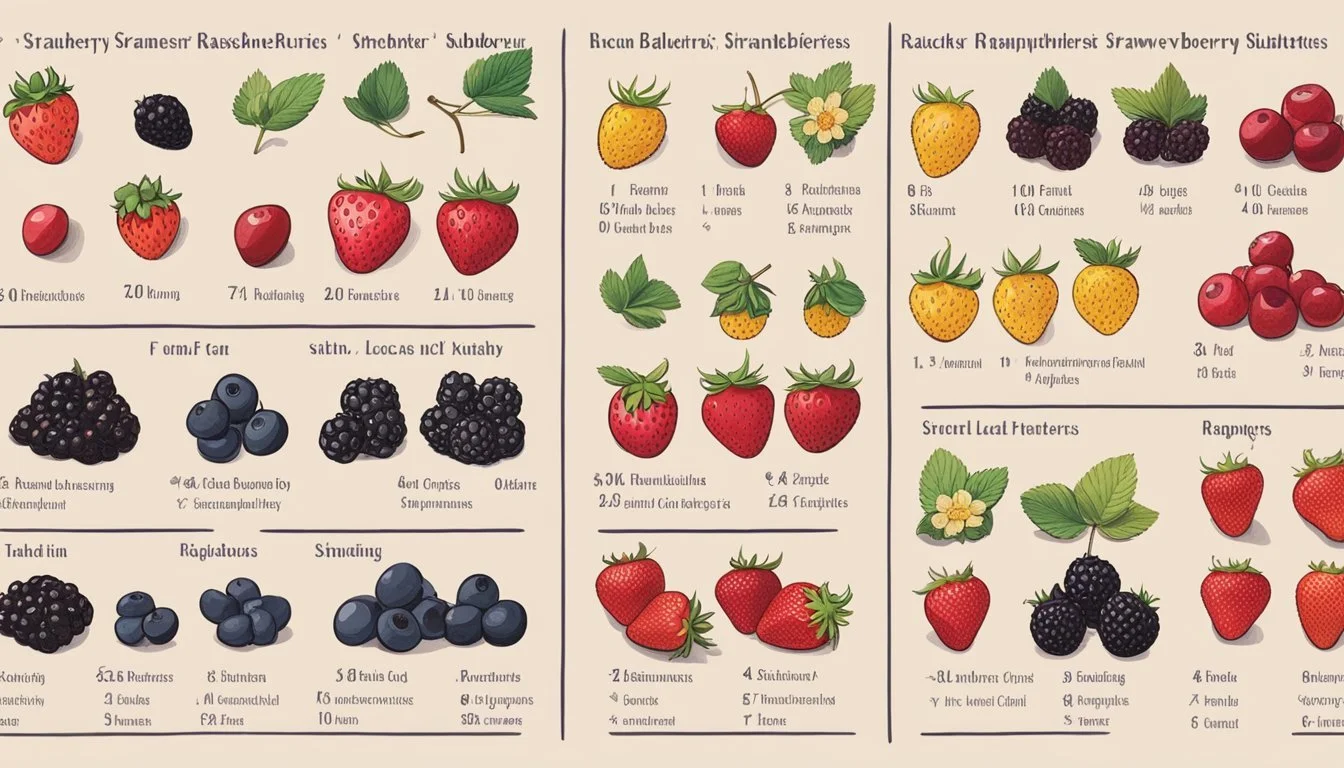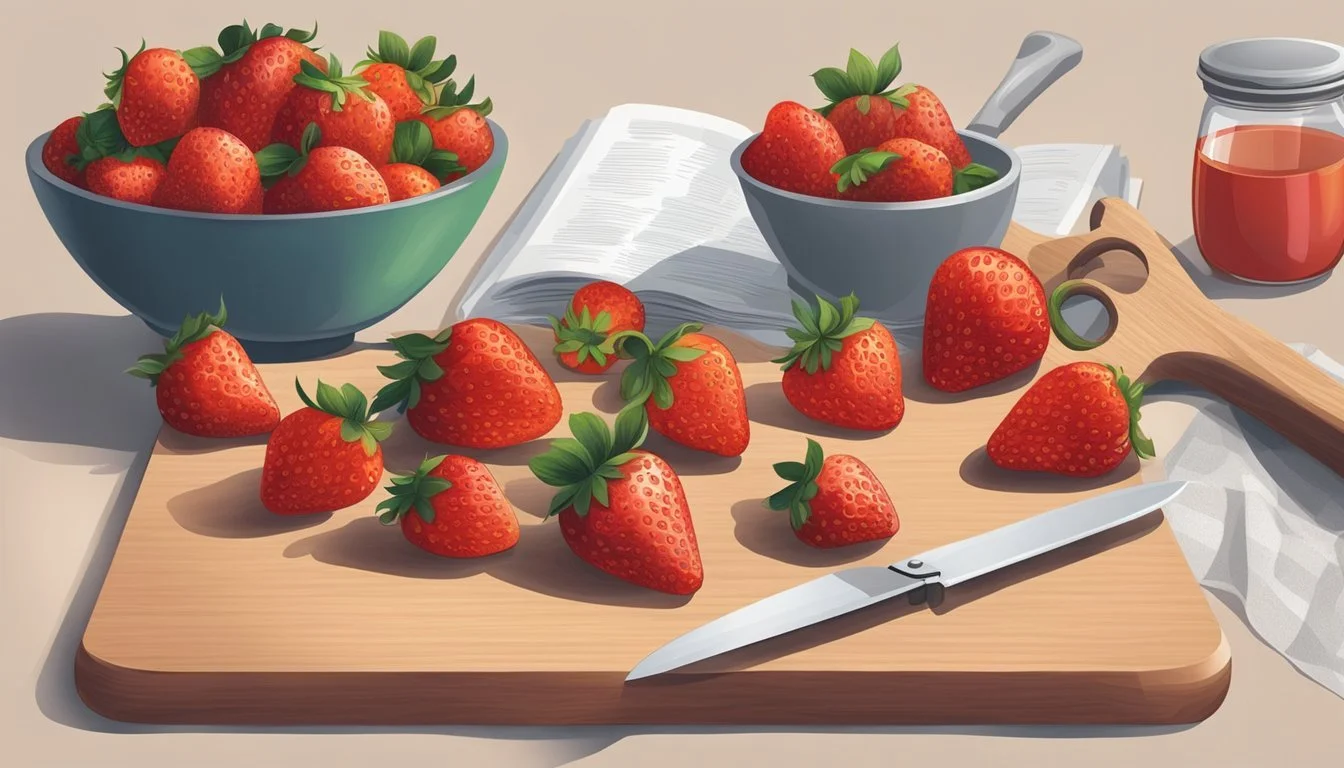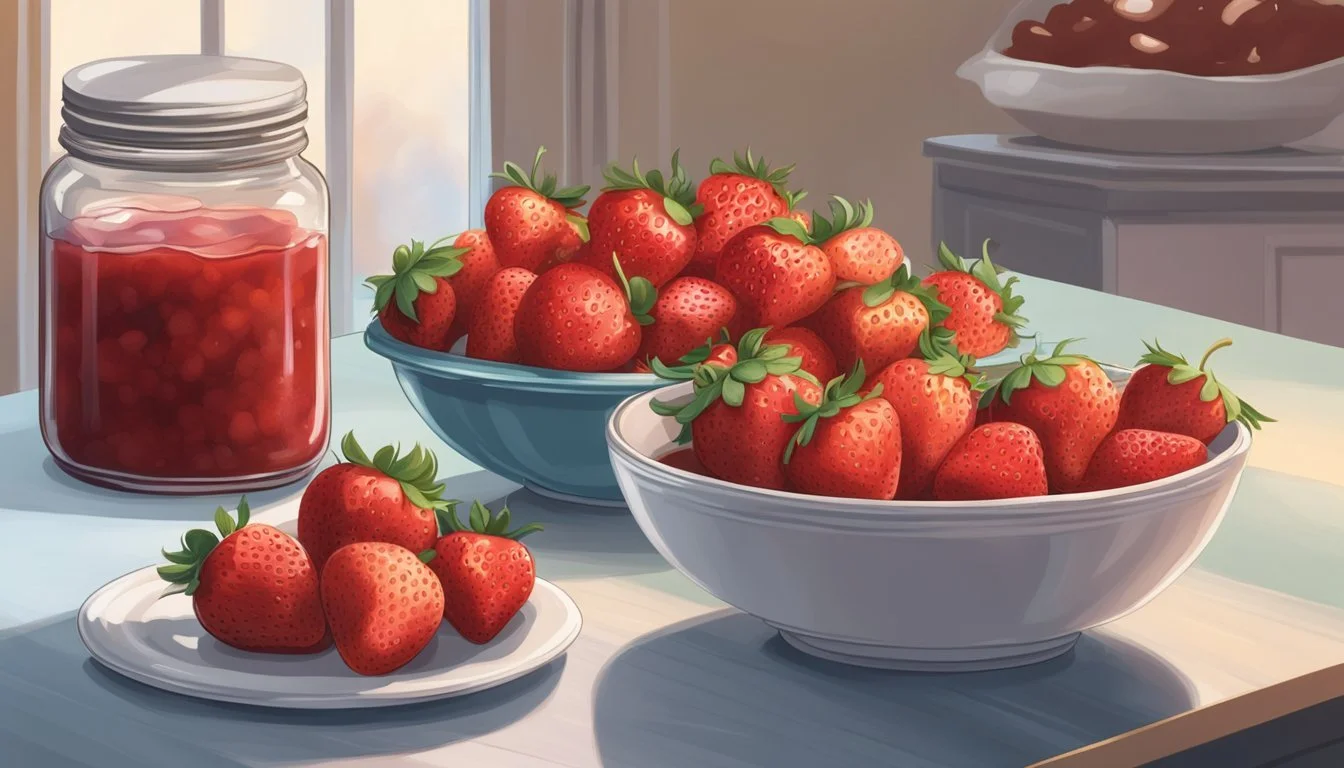Strawberries Substitutes
Best Alternatives for Recipes
Finding the perfect substitute for strawberries can be crucial for various dishes, whether due to allergies, availability, or simply wanting a change in flavor. Kiwi stands out as an excellent alternative, offering a similar taste and texture that fits well in smoothies, salads, and desserts. Its vibrant green color can also add an interesting twist to the presentation of your meal.
For those looking to replicate the red hue and juicy burst of strawberries, raspberries are a fantastic choice. They provide a comparable flavor profile while also being rich in vitamins and dietary fiber. They work wonderfully in recipes like pavlova or fruit tarts, where the color and texture can shine.
Another noteworthy substitute is rhubarb, which brings a unique tartness that can elevate pies and crumbles. Rhubarb, when sweetened appropriately, pairs nicely with many recipes that traditionally use strawberries, offering both versatility and depth of flavor.
Understanding Strawberries
Strawberries are not only known for their bright red color and sweet flavor but also their impressive nutritional profile, versatility in culinary uses, and unique characteristics.
Nutritional Profile
Strawberries are rich in vitamin C, providing a significant portion of the daily recommended intake. They also contain dietary fiber, which aids in digestion. In addition to these, strawberries are packed with antioxidants that can help in reducing inflammation and oxidative stress. A typical serving of strawberries is low in calories, making them an excellent choice for those looking to maintain a healthy diet. Potassium, folate, and manganese are among other essential nutrients found in strawberries.
Culinary Uses
Strawberries are widely used in various dishes, from breakfast items like yogurts and smoothies to desserts such as cakes and pies. They can be consumed fresh or used as a topping for ice cream, pancakes, and waffles. Strawberries are also common in savory dishes, where their sweetness balances well with ingredients like balsamic vinegar or goat cheese. You can often find strawberries in salads, adding both flavor and color.
Unique Characteristics
Strawberries have a distinctive sweet flavor combined with a slight acidity, which makes them a favorite in many recipes. Their rich red color and glossy texture make them aesthetically pleasing in food presentation. A key feature of strawberries is their consistency, which is firm yet tender enough to be easily mashed or pureed. Additionally, the small seeds on the surface of strawberries contribute to their unique texture and appeal.
Strawberry Substitutes in Recipes
For various recipes, substitutes for strawberries can vary based on flavor, texture, and color. These alternatives can enhance both sweet and savory dishes, cater to baking needs, and serve as decorations.
For Sweet Dishes
Raspberries are an excellent substitute in desserts like pies, cakes, and smoothies. They mimic the tart-sweet flavor of strawberries and have a similar texture. When using strawberry jam or strawberry preserves, raspberry jam is a suitable alternative that maintains consistency and flavor profile.
Kiwi, on the other hand, offers a unique twist with its vibrant green color and slight tartness. It works well in fruit salads and can replace strawberries' role in parfaits or breakfast bowls.
Strawberry syrup can be replaced with raspberry syrup or even fruit purees for an equally sweet finish.
For Savory Dishes
Figs can be a surprising yet effective replacement in salads or glazes. They provide a sweet yet earthy flavor that blends well with items like goat cheese or balsamic vinegar.
Rhubarb offers a tartness that complements savory dishes such as chicken or pork recipes. When cooked down, it can replace strawberry in chutneys and sauces, adding depth without overpowering the dish.
For those using strawberries in a vinaigrette, strawberry extract can substitute without changing the overall balance of the dressing.
In Baking
Strawberry puree can be replaced with raspberry puree in cakes and muffins, providing a familiar color and softness. For a denser texture, fig puree is an alternative, offering natural sweetness and a similar baking behavior.
Kiwi slices can replace strawberries for cake toppings, delivering a splash of green and a similar moisture level. If the recipe calls for strawberries as a filling, strawberry preserves can be swapped with raspberry preserves to maintain consistency and moisture.
Additionally, strawberry extract in baking recipes can be substituted with other fruit extracts like raspberry.
For Decorating
Kiwis are visually striking with their green and black speckled appearance, making them ideal for decorating cakes and tarts in place of strawberries. They retain color well and add a fresh look to desserts.
Raspberries are another alternative, offering a deep red hue similar to strawberries, which makes them suitable for garnishing various treats.
For those desiring a homogenous decorative glaze, strawberry syrup can be substituted with raspberry syrup. Strawberry puree, if used for drizzling, can be replaced by fruit purees like raspberry or kiwi, providing versatility in color and taste.
Fruit Alternatives to Strawberries
When strawberries are not available or you want to try something different, there are several fruit options that can serve as effective substitutes. These alternatives provide similar flavors, textures, or nutritional benefits.
Berries
Raspberries are an excellent alternative to strawberries, offering a comparable flavor and texture. They are also high in vitamin C, dietary fiber, and other essential nutrients.
Blueberries, while smaller and less tart, can be used in many recipes that call for strawberries, such as smoothies and desserts. They are packed with antioxidants.
Both raspberries and blueberries can be used fresh or frozen, making them versatile options.
Citrus Fruits
Oranges and mandarins can bring a tangy and sweet flavor to dishes where strawberries are usually used. They are rich in vitamin C and add a refreshing quality to fruit salads and desserts.
Lemons and limes can’t replace the color of strawberries but can add a zesty flavor component. Using these fruits in small amounts alongside another substitute can enhance the overall taste.
Tropical Fruits
Kiwi is a vibrant, green fruit that mimics the tangy taste of strawberries. It works well in fruit salads and desserts where visual appeal is important. Kiwi is also high in vitamin C and dietary fiber.
Mango and pineapple provide a sweet and exotic alternative. Their juicy texture makes them suitable for smoothies and tropical-themed desserts.
Bananas can offer a different sweet flavor, best used in baked goods or as part of a mixed fruit compote.
Stone Fruits
Peaches can substitute strawberries with their juicy texture and natural sweetness. They are ideal for pies, tarts, and fruit salads.
Cherries bring a slightly tart and sweet flavor, fitting well into desserts and savory dishes alike. They are also rich in antioxidants and vitamins.
Plums can serve as a substitute when you need a robust and less sweet alternative. They work especially well in compotes and jams.
Non-Fruit Strawberry Substitutes
When fresh strawberries are not available or suitable for a recipe, certain vegetables and artificial flavors can be effective replacements. Different options will work better depending on whether you need a similar texture, appearance, or flavor.
Vegetables
Rhubarb provides a tangy and slightly sweet flavor similar to strawberries. While its texture is firmer when raw, cooking rhubarb softens it to a consistency close to cooked strawberries. It works well in pies, jams, and sauces, often paired with sugar to mimic the sweetness of strawberries. Rhubarb is an excellent choice for baking and can be stewed, sweetened, or used in compotes.
Artificial Flavors
Strawberry extract and jello are two common alternatives that can replicate the taste of strawberries without using any fresh fruit.
Strawberry extract provides a strong, concentrated flavor ideal for baking and beverages. A few drops can be enough to infuse cakes, cookies, and smoothies with a strawberry taste. This extract is especially useful when you need the flavor but can do without the texture.
Strawberry-flavored jello can also be used in a variety of recipes. It's particularly effective in desserts where a gelatinous texture is desired. Additionally, jello can be mixed into other ingredients to create strawberry-flavored fillings or layers in multi-component dishes such as trifles.
Special Considerations
When substituting strawberries, it’s crucial to consider potential allergens and dietary preferences alongside the seasonal and local availability of suitable replacements.
Allergies and Dietary Restrictions
Substituting strawberries requires careful attention to possible allergies and dietary restrictions. Some individuals may have allergic reactions to berries such as raspberries or other fruits like kiwi and figs. Fruit seeds can also pose a problem for those with diverticulitis or other digestive disorders.
Raspberries, for instance, have seeds that could cause discomfort. Alternatives like rhubarb or strawberry extract might be safer for those with sensitivities. It's important to choose substitutes that align with everyone's health needs, especially for communal dishes.
Seasonality and Locality
The availability of strawberry substitutes varies seasonally and by locality. During off-seasons, fresh berries like strawberries and their counterparts might not be readily available. This is where canned strawberry products or jams can be helpful.
Local substitutes offer a sustainable option. For example, in regions where tropical fruits are more common, using local fruits can enhance freshness. Opting for what's in season ensures a more flavorful and nutritious choice, benefiting both taste and the environment.
How to Choose the Right Substitute
Selecting the best strawberry substitute depends on matching flavor, texture, visual appeal, and nutritional content to ensure the desired outcome in your recipe. Consider these aspects while making your choice.
Flavor Matching
Flavor is crucial when substituting strawberries. Raspberries are a common choice due to their similar sweet and slightly tart taste. Kiwis also mimic the sweet-tart flavor but add a unique twist. For recipes like desserts or smoothies, you might consider strawberry jam or extract which provide concentrated strawberry flavor. These options help retain the intended taste profile of your dish.
Texture Considerations
The texture of strawberries can be important, especially for recipes that rely on their juicy, seedy nature. Kiwis offer a comparable texture with their soft, juicy flesh and small seeds. Figs provide a similar seedy texture, though they are less juicy. For baked goods, rhubarb can substitute well, providing a similar body once cooked while adding a slight crunch.
Visual Appeal
Appearance can make or break a dish. Kiwis and raspberries share a vibrant color, though kiwis introduce a green hue. Using strawberry jam or canned strawberries helps maintain the red color in desserts and pastries. Consider the impact of color changes on your dish’s presentation and choose accordingly to maintain its visual appeal.
Nutritional Content
Nutritional content might be a pivotal factor for some. Raspberries are high in vitamin C, calcium, iron, magnesium, potassium, and dietary fiber. Kiwis also offer high vitamin C and potassium levels. Figs provide dietary fiber and iron. When health benefits are paramount, understanding the nutritional profile of your substitutes ensures your dish remains nutritious.
Preparation Tips for Strawberry Substitutes
When substituting strawberries in recipes, consider the form and specific needs of the dish. Fresh and frozen alternatives, as well as purees and syrups, each require different handling to maintain the desired flavor and texture.
Using Fresh Substitutes
Raspberries: When using raspberries in place of strawberries, they can be swapped in a 1:1 ratio. Their similar flavor and texture make them an ideal substitute in desserts and fresh salads.
Kiwi: Kiwi can be a unique alternative for strawberries in fruit salads and garnishes. Its vibrant green color adds visual appeal but its tartness should be balanced with a bit of extra sugar.
Rhubarb: Rhubarb requires cooking to soften its fibrous texture. Pair it with sugar and a little lemon juice to mimic the sweetness and tanginess of strawberries in pies and compotes.
Using Frozen Substitutes
Frozen Raspberries: Frozen raspberries can be used directly in smoothies or thawed for baking. Thaw them in the refrigerator and drain excess liquid to avoid altering the recipe’s consistency.
Frozen Kiwis: When using frozen kiwi, ensure it's well-thawed and drained. Frozen kiwi can become mushy, so it's best used in purees or blended dishes.
Frozen Rhubarb: Like fresh rhubarb, frozen rhubarb should be cooked before use. Measure it while still frozen to get accurate quantities, and then cook with sugar and water until soft for use in desserts.
Making Purees and Syrups
Raspberry Puree: Blend raspberries with a touch of sugar and lemon juice to create a puree that can be used in sauces or as a filling. Strain the puree to remove seeds for a smoother consistency.
Kiwi Puree: Kiwi puree can be made by blending the fruit with sugar. Add a bit of lemon juice to enhance the flavor and adjust the sweetness to match the tartness of strawberries.
Rhubarb Syrup: Cook rhubarb with sugar and water until it breaks down completely. Strain out the solids to create a syrup that can be used in beverages and desserts.
Adjusting Sweetness and Acidity
Balancing Tartness: Some substitutes, like kiwi and rhubarb, are more tart than strawberries. Increase the sugar in the recipe to balance their acidity. Lemon juice can also help regulate the flavor.
Consistency Adjustments: Substitutes like frozen fruits can release more water. Adjust the liquid content in your recipe or add a thickening agent like cornstarch to maintain the proper consistency.
Using Strawberry Products: Canned or jammed strawberries can also be used. Reduce other sugars in the recipe if these products are sweetened to avoid overpowering the dish.
Conclusion
When it comes to finding a strawberry substitute, there are several smart choices available that can match the flavor and texture of strawberries. Each option offers different benefits and can fit a variety of dietary needs.
One popular alternative is raspberries. They have a similar taste and can be used in most recipes without significant changes.
Kiwi is another fruit that can replace strawberries effectively. Its unique flavor can add a new twist to dishes while maintaining a similar texture.
Figs bring a rich sweetness that can complement many recipes where strawberries are typically used.
For those seeking substitutes from strawberry products, strawberry jam or canned strawberries can be useful. These options retain much of the original taste and can be easily incorporated into various dishes.
Rhubarb can also be a brilliant choice, offering a tangy flavor that pairs well with other ingredients.
For versatility and availability, these alternatives ensure you can enjoy your favorite recipes even when strawberries are out of season. Using these substitutes can help keep your dishes nutritious and delicious.

